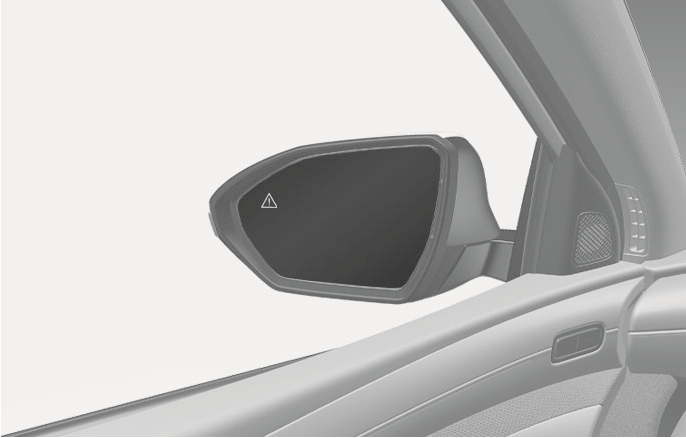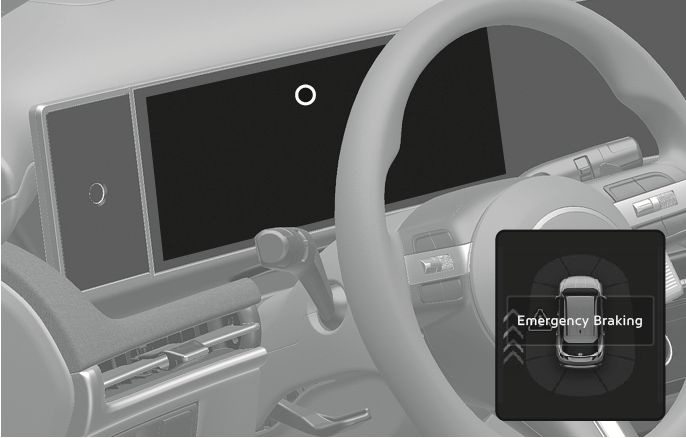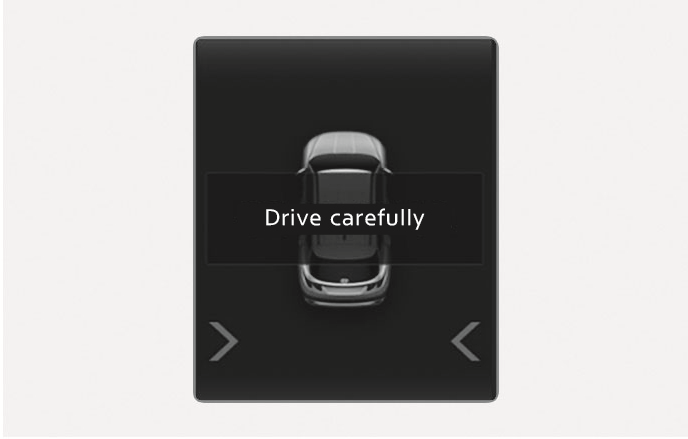Blind-Spot Collision-Avoidance Assist Operation

2C_BCAVehicleDetection
When the vehicle is detected in the rear left and right lanes, to warn the driver a vehicle is detected, the warning light on the side view mirror and Head-Up-Display (if equipped) will illuminates. Vehicle detection operates under following conditions.
-
Your vehicle speed: above 12 mph (20 km/h)
-
Vehicle in the blind spot area: above 6 mph (10 km/h)
Collision Warning operates when the turn signal is turned on in the direction of the detected vehicle.
-
To warn the driver of a collision, the warning light on the side view mirror blinks. At the same time, an audible warning sounds.
-
When the turn signal is turned off, the collision warning is canceled and Blind-Spot Collision Avoidance Assist returns to vehicle detection state.
Collision Warning operates under following conditions.
-
Your vehicle speed: above 25 mph (40 km/h)
-
Vehicle in the blind spot area: above 6 mph (10 km/h)
-
The detecting range of the rear corner radar is determined by a standard road width, therefore, on a narrow road, Blind-Spot Collision-Avoidance Assist may detect other vehicles two lanes over and warn you. In contrast, on a wide road, Blind-Spot Collision-Avoidance Assist may not be able to detect a vehicle driving in the next lane and may not warn you.
-
When the hazard warning flasher is on, the collision warning by the turn signal will not operate.
The images and colors in the instrument cluster may differ depending on the instrument cluster type or theme selected from the settings menu.

2C_BCABrakingControl
-
To warn the driver of a collision, the warning light on the side view mirror will blink and a warning message will appear on the instrument cluster. At the same time, an audible warning will sound, warning light will blink and the steering wheel will vibrate.
-
Emergency Braking will be assisted to help prevent collision with the vehicle in the blind spot area.
-
Blind-Spot Collision-Avoidance Assist will operate when your vehicle speed is below 2 mph (3 km/h) and the speed of the vehicle in the blind spot area is above 3 mph (5 km/h).
-
When the vehicle is stopped due to emergency braking, the "Drive carefully" warning message will appear on the instrument cluster.
For your safety, the driver should depress the brake pedal immediately and check the surroundings.

2C_DriveCarefullyInfo_3
-
Brake control will end after approximately 2 seconds of emergency brake control.
-
During braking control by the Blind-Spot Collision-Avoidance Assist, braking control will end when the driver operates the brake pedal with sufficient force.
Take the following precautions when using Blind-Spot Collision-Avoidance Assist:
-
For your safety, only change the Settings after parking the vehicle at a safe location.
-
If any other system's warning message appears or audible warning is generated, Blind-Spot Collision-Avoidance Assist's warning message may not be displayed and audible warning may not be generated.
-
You may not hear the warning sound of Blind-Spot Collision-Avoidance Assist if the surrounding is noisy.
-
Blind-Spot Collision-Avoidance Assist may not operate if the driver applies the brake pedal to avoid a collision.
-
When Blind-Spot Collision-Avoidance Assist is operating, braking control by the function will automatically cancel when the driver excessively depresses the accelerator pedal or sharply steers the vehicle.
-
During Blind-Spot Collision-Avoidance Assist operation, the vehicle may stop suddenly injuring passengers and shifting loose objects. Always have the seat belt on and keep loose objects secured.
-
Even if there is a problem with Blind-Spot Collision-Avoidance Assist, the vehicle's basic braking will function normally.
-
Blind-Spot Collision-Avoidance Assist does not operate in all situations and cannot avoid all collisions.
-
Blind-Spot Collision-Avoidance Assist may warn the driver late or may not warn the driver depending on the road and driving conditions.
-
Driver should maintain control of the vehicle at all times. Do not depend on Blind-Spot Collision-Avoidance Assist. Maintain a safe braking distance, and if necessary, depress the brake pedal to reduce driving speed or to stop the vehicle.
-
Never operate Blind-Spot Collision-Avoidance Assist on people, animal, objects, etc. It may cause serious injury or death.
The brake control may not operate properly depending on the status of ESC (Electronic Stability Control).
There will only be a warning when:
-
The ESC (Electronic Stability Control) warning light is on
-
ESC (Electronic Stability Control) is engaged in a different function